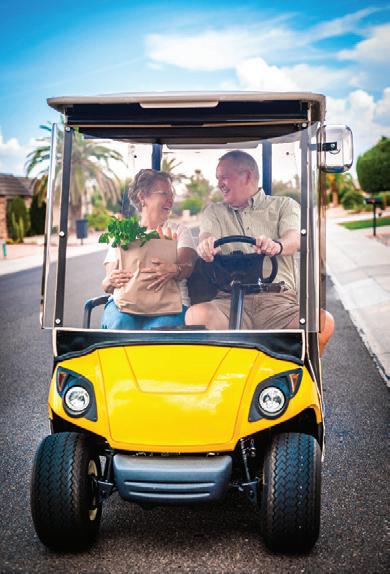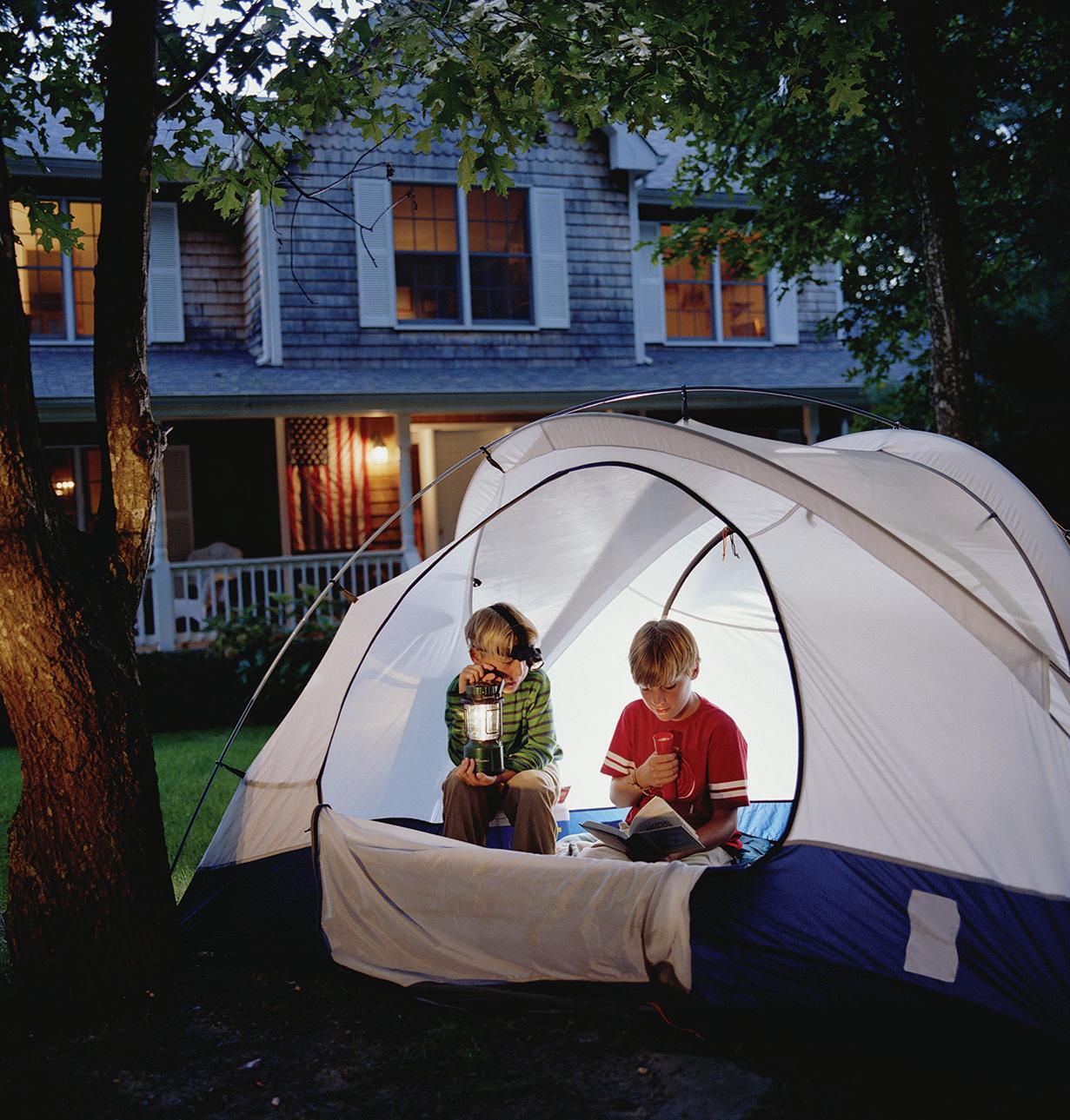

POOL SAFETY
Strategies to keep in mind this summer

Submitted
Pools are great spots to beat the heat and enjoy some exercise. They’re also ideal spots for children to socialize with their friends away from screens.
As inviting as pools can be, it is important that swimmers recognize that safety is paramount, particularly for those who have the benefit of backyard pools. The organization Stop Drowning Now indicates that an average of 3,500 to 4,000 people drown each year in the United States, with 10 drownings occurring each day. In addition, 6,500 non-fatal injuries are treated in hospital emergency departments each year, with a significant percentage of these incidents involving children under the age of 15 injured in residential pools.
Pools are fun spaces that should not elicit fear. These swimming pool safety tips can help safeguard swimmers of all ages.
INSTALL BARRIERS
Barriers like tall, self-latching fences and gates (with vertical panels not easily scaled) can deter unmonitored entry into a pool area. Such safety precautions are mandatory in many towns and cities, even if there is a separate fence around the perimeter of the yard. Additional safety precautions can include special ladders that roll down or lock for above-ground pools, and alarms that sound if someone opens a pool gate without homeowners’ knowledge.
CLOSE SUPERVISION
Lifeguards are stationed at public pools to keep careful watch of swimmers. The role of lifeguard at pools on private properties must be filled by responsible adults. Children should never be allowed to swim without someone monitoring the water at all times. Swimmers should be asked to exit the pool in the event the adult monitoring the pool needs to head indoors for a minute or if the adult’s attention is pulled elsewhere while outside. When hosting a pool party, hosts can consider hiring a lifeguard to watch the pool so they can handle hosting duties elsewhere.
LEARN TO SWIM
Although it’s possible to drown in mere inches of water, the likelihood of drowning is lower for experienced and skilled swimmers. Enroll children in swim lessons so they can learn the proper techniques. Until kids’ swimming skills are strong, it may be advisable for them to wear a Coast Guard-approved life jacket when in the water. Inflatable water wings and other devices are not guaranteed lifesaving devices.
KEEP THE POOL CLEAN
A pool should be properly maintained and sanitized to remain a safe space. The primary pool sanitizers include chlorine and bromine, which help prevent algae and bacterial growth. Maintaining a proper pH in the water increases swimmer comfort and helps the sanitizer work optimally.
DIVE CAREFULLY
Swimmers should always enter the pool feet-first, unless there is a diving board and a safe diving depth. The American National Standards Institute says the minimum depth of a diving board in a swimming pool is 7.5 feet, but some municipalities have their own recommendations. A depth of nine feet is often recommended for safer diving.
WALK, DON’T RUN
It’s tempting to run around the perimeter of an inground pool, especially when kids are having fun. But wet surfaces become slippery, and it’s easy to slip and fall, risking injury or falling into the pool water.
Swimming pool safety is vital to keep everyone out of harm’s way.

Family fun makes for enjoyable evenings
Submitted article
According to South University, children feel special when their parents take time to engage in fun activities with them. Routine activities and the occasional unusual outing can make for great bonding experiences. The opportunities for families to have fun do not stop just because the sun sets. In fact, many different activities are tailor-made for family fun in the evening hours.
BACKYARD CAMPING
Children can ease into the idea of camping by having the first overnight excursion take place in their own backyard. Set up a tent, light a campfire in the fire pit, and have fun experiencing the sights and sounds of outdoors at night. With close proximity to the bathroom, and an easy means of escaping the outdoors if bad weather sets in, backyard camping can be a safe way to learn some basic camping skills and experience a night under the stars.
WATCH A MOVIE
Turn an outdoor (or indoor) area into a theater to enjoy a family friendly film. Projectors are relatively inexpensive and some can hook up to smartphones, making them quite portable. Invite extended family and friends over for the ultimate movie night.
HOST A SCAVENGER HUNT
Everyone in the family can take part in a scavenger hunt. Doing so in the dark can make the hunt


a bit more challenging. Young children can be paired off with an older sibling or an adult for safety’s sake. Items to collect outdoors can include a garden stone, tree branch, pinecone, clover, or backyard accessory, like a grill brush. Curate the list so items can be found without too much exploring in the dark.
STAR GAZING
Learn about the galaxy, stars, solar system, and more by finding a dark place away from artificial lights to stare into the sky.
Consult books about what you’re seeing or rely on a phone app that can identify celestial bodies and constellations. From meteor showers to eclipses, there are plenty of celestial events to engage stargazers. In 2025, the Perseids Meteor Shower will occur between August 12 and 13. On August 19, Mercury will be at the greatest western elongation, making this the best time to view the planet low in the eastern sky just before sunrise.
TOASTING MARSHMALLOWS Fire pits and late summer and early fall evenings make a perfect pair. Add to the fun with marshmallows toasted on skewers and a fixings bar of other



sweet treats, like s’mores ingredients or cookies and fruit to enjoy with the melted marshmallows.
FLASHLIGHT TAG
A spin on traditional hide and seek, children and adults run around in the evening with flashlights and try to find or rescue team members. MEAL COMPETITION
Take a page out of the cooking show playbook by pitting the family against one another in a light-hearted manner. With a set list of ingredients, everyone puts a spin on a signature meal made from the same ingredients. Make the most of evenings by spending time together with the family outdoors or inside.




Tips to plan a summer adventure
Submitted article
Few people would deny summer is a season of relaxation. But that familiar laid back vibe does not mean summer also can’t be a time for adventure.
The definition of an adventure depends on who does the defining. To some, an adventure may entail relaxing on a boat as it sways back and forth on a serene lake or in a calm ocean. For others, adrenaline levels need to rise in order for an activity to qualify as an adventure. It’s perfectly alright for people to define adventure in their own unique way. However one chooses to define an adventure, the following are some summer adventure planning pointers that can make an upcoming excursion more enjoyable.
• Choose your destination and route. Heading off for parts unknown with no itinerary may seem like the ultimate adventure. However, a lack of planning can quickly derail a getaway. Traffic, fellow tourists, lodging shortages, and other unwanted developments are all likely when vacationers do not plan ahead. By planning an adventure in advance, travelers can choose routes that are less likely to be overcome with traffic, book stays in memorable and comfortable accommodations and steer clear of crowded tourist destinations.
• Leave yourself some leeway. Of course, planning ahead does not re-

quire planning every second of each day you will be traveling. Leave yourself some wiggle room and free time to head off the beaten path if you so desire. Avoid making dinner reservations for each night you’re traveling, as doing so might lead you to prioritize making the reservation over exploring. Instead, build in some days and nights where you can go at your own pace without having to rush to ensure you make it to a prearranged activity or dinner reservation on time.
• Pack food and beverages. Nothing can derail an adventure more quickly than thirst and/or a growling stomach. Going off the grid or enjoying an adventure without
a schedule dictating your every moment is easier when you pack food and beverages. Depending on where you’re going, the nearest eatery could be far away, which means travelers who don’t pack food and beverages are likely to spend more time driving in search of sustenance than they are enjoying an adventure.
• Make a contingency
plan. Road trips are not as predictable as excursions to resorts that make no secret about all guests can enjoy during their stay. Traffic, large crowds and weather can turn an adventurous road trip into an exercise in managing frustration. A contingency plan that includes a detailed list of alternative activities and destinations can ensure an adventure does not become a nightmare if forces beyond your control present themselves.
• Ask for everyone’s input. Everyone, even solo travelers, can benefit from additional insight when planning an adventure. Parents can ask their children if there’s anything in particular, they want to do during a trip so kids are equally excited about the vacation. Solo travelers can ask friends and family members for advice about potential activities and sights to see during their trip.
Planning a summer adventure can be its own enjoyable experience that heightens travelers’ anticipation for an upcoming trip.

Nutritional benefits of
Submitted article
Those who want something nutritious to eat alongside less healthy fare like hamburgers and hot dogs can consider the many nutritional benefits of watermelon.
• Watermelon is low in calories. The Mayo Clinic notes that one cup of watermelon is 46 calories. That makes watermelon an ideal low-calorie dessert.
• Watermelon promotes hydration. The Mayo Clinic notes watermelon is 92 percent water, which can help people remain hydrated on hot summer days spent outside.
• Watermelon is a good source of vitamins C and A. Watermelon contains 14 percent of the recommended daily value (DV) of vitamin C per USDA dietary guidelines, and also contains 5 percent of the recommended DV of vitamin A, which the NIH notes is important for normal vision, immune system health, reproduction, and growth and development.
• Watermelon does not contain any fat, cholesterol or sodium. Watermelon contains no fat, cholesterol or sodium. Opting for watermelon over more traditional desserts can help people lower their fat consumption, reduce their cholesterol and avoid overconsumption of sodium.
Watermelon makes for a refreshing treat on a hot summer day. But watermelon provides a host of additional nutritional benefits as well.


